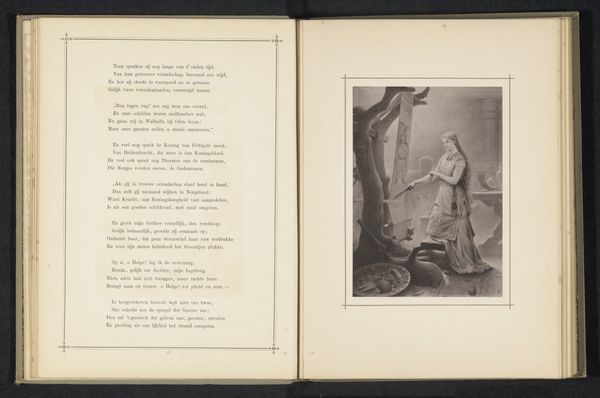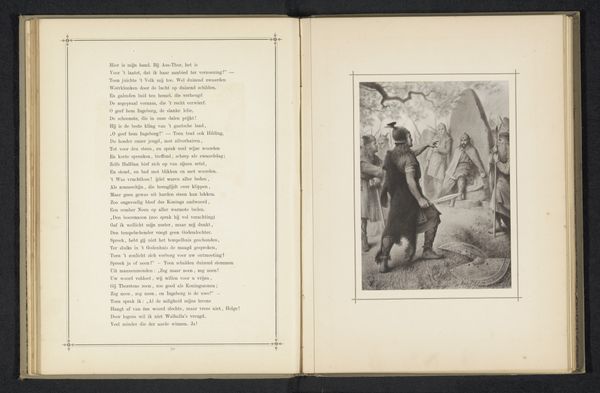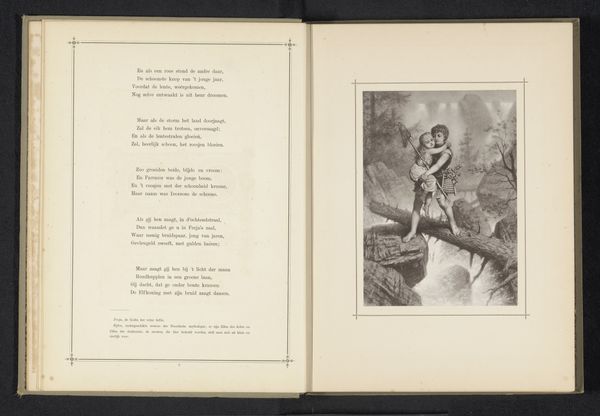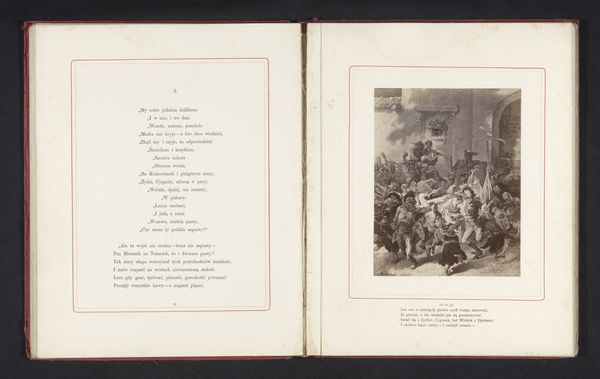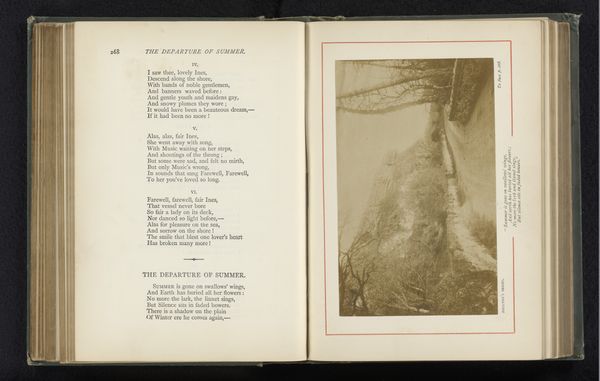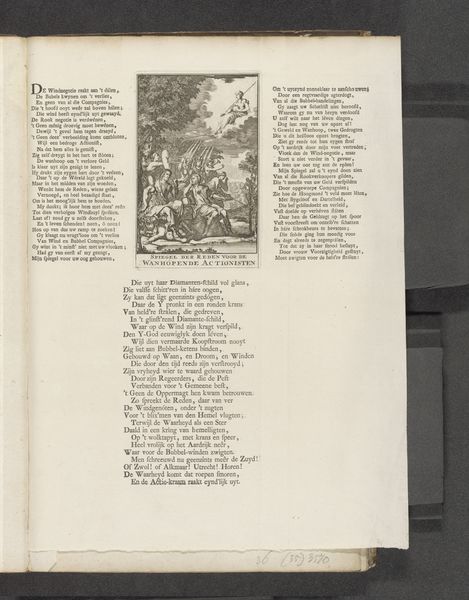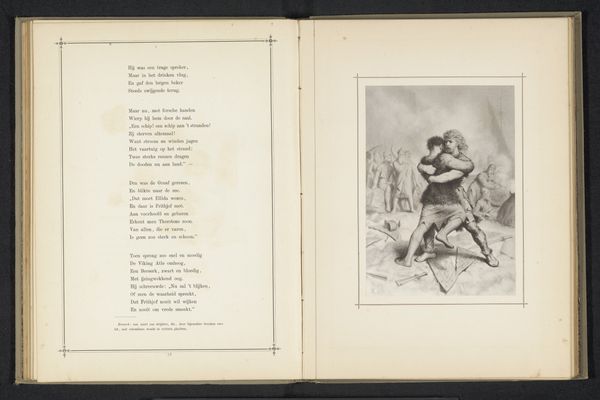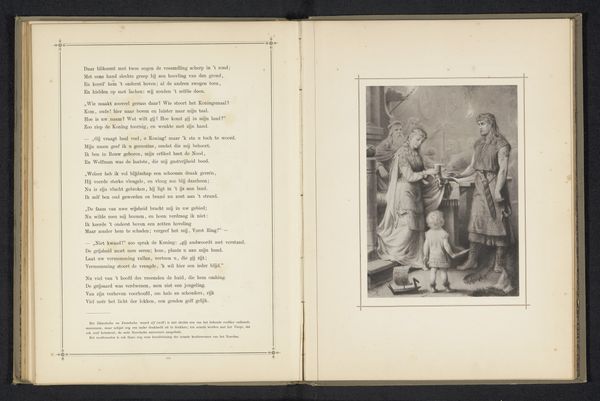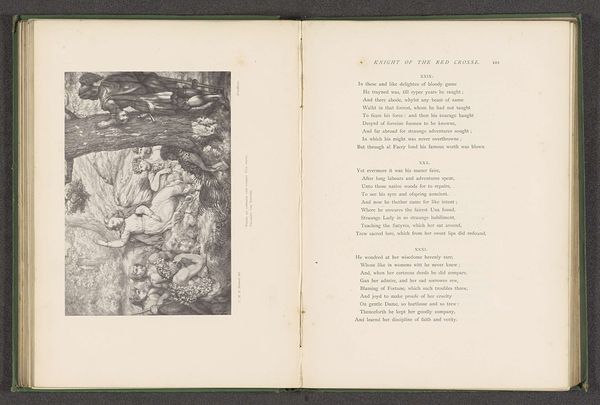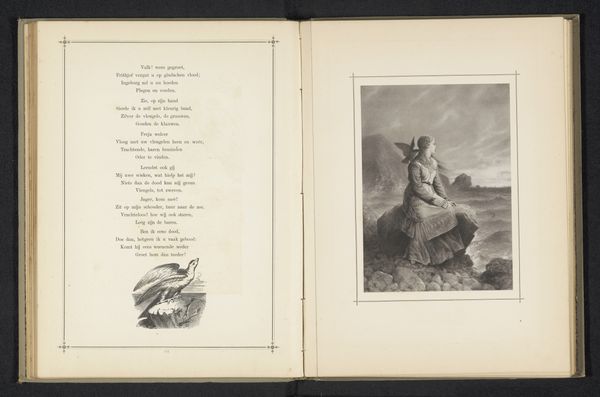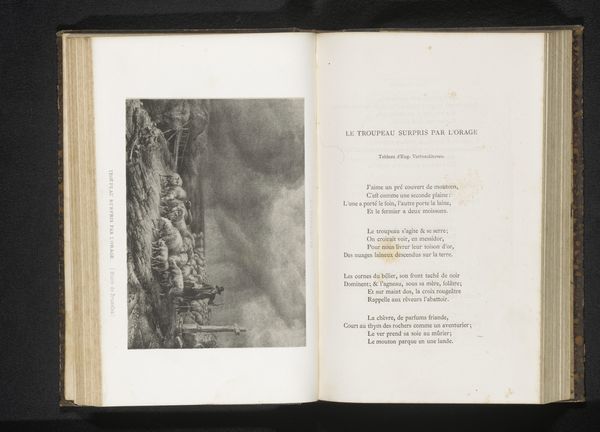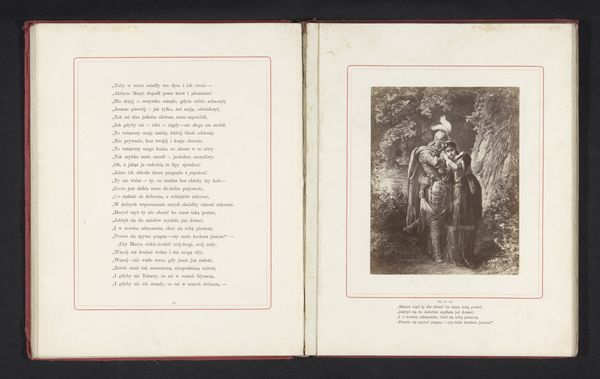
Fotoreproductie van een tekening van Frithjof bij het altaar van Balder c. 1872 - 1882
0:00
0:00
Dimensions: height 174 mm, width 125 mm
Copyright: Rijks Museum: Open Domain
Curator: Immediately, the stark contrast arrests the eye. A single light source sculpts the scene, lending it a theatrical air, wouldn’t you agree? Editor: This engraving is titled “Fotoreproductie van een tekening van Frithjof bij het altaar van Balder,” or “Photographic reproduction of a drawing of Frithjof at the altar of Balder,” dating from circa 1872 to 1882. Its very texture, the hatched lines of the engraving, seem to vibrate. Curator: The dynamism comes, I think, from that masterful handling of light and shadow. The deep blacks frame the highlighted figure of Frithjof, heightening the sense of drama. But why depict this particular moment? What narrative purpose does it serve? Editor: This piece speaks to a fascination with Norse mythology prominent in the Romantic era, during a time when European cultures were attempting to connect with their ancient cultural roots to forge national identities. The surge of interest in tales like Frithjof's Saga created powerful socio-cultural resonance. Curator: So it’s more than just surface. Semiotically speaking, the altar, the posture of the characters, they coalesce to create a charged ideological statement within a specific timeframe. Editor: Absolutely. Context informs the entire image. Frithjof's actions here, what they represent, must be viewed through the lens of late 19th century European society. Curator: Note the use of diagonal lines as well—the slope of Frithjof's body. See how the diagonals inject further chaos into an already turbulent scene. Editor: What resonates with me is how this rather modest print participated in a widespread popularization of old Norse myth, making heroes accessible and narratives tangible within the domestic sphere. Curator: A perfect confluence of formal construction and cultural agenda, then. It makes me see Romanticism’s visual potency quite anew. Editor: I concur. Reflecting upon its creation alongside its subsequent place within culture grants insights beyond mere technical appreciation, doesn't it?
Comments
No comments
Be the first to comment and join the conversation on the ultimate creative platform.
